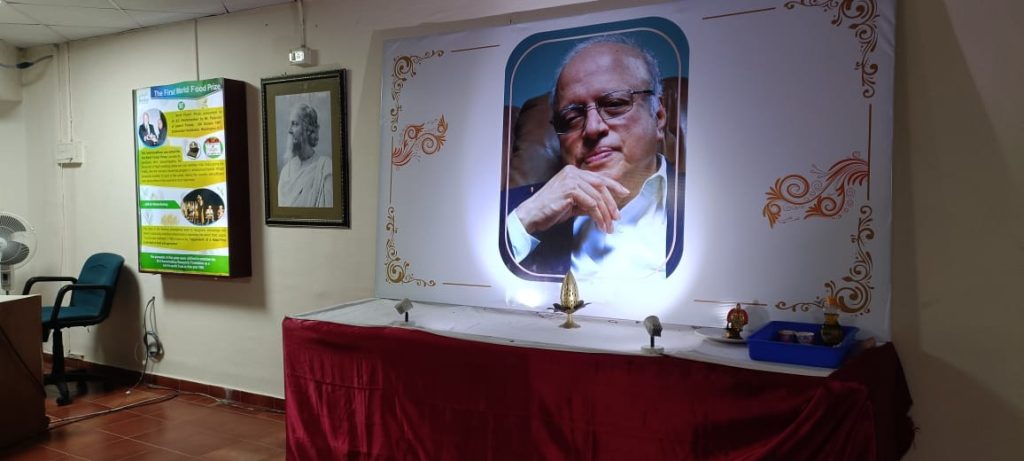Dr. Swaminathan took on India’s most crucial problem – hunger
Srijita Bose | October 19, 2023
Dr. M.S. Swaminathan, the father of the green revolution passed away in Chennai on September 28, 2023. He was known for bringing a culture of agricultural research and policymaking to India at a time when the newly independent country was battling to provide food security.

How was the green revolution helpful?
Dr. M.S. Swaminathan proposed the green revolution to tackle India’s food availability problem. The green revolution enabled the introduction of new high-yield seeds, which responded better to fertilizers, pesticides, and irrigation. The government provided incentives in the form of subsidies, credit financing, and agricultural research and development to increase productivity. India produced 10.4 million tons of wheat in 1966 to feed a population of over 500 million. The total annual food production per person stood at 296 kg until 1966–1967.
Dr. Swaminathan advocated for Minimum Support Price (MSP) for farmers, resulting in improved crop yields. India’s annual food produced per person jumped 23% to 365 kg from 1967 to 1972, allowing the country to feed every citizen a kilogram of food every day.
Where do we stand now?
50 years later, India was able to make 1.87 kg of food every day – not a befitting rise in production. In the same year, nearly two in every three Indians were vulnerable to food insecurity and 16.3% of the population suffered from undernutrition, the Economist Said. Out of 125 countries, India ranks 111th in the Global Hunger Index.
Major Policy Changes
The National Bank for Agriculture and Rural Development (NABARD) was established in 1982 to provide institutional credit to Farmers. Multiple national policies since 2000 resulted in food production more than doubling from 2007 to 2012. Policymakers then focused on increasing investments, access to land, credit, and skills, and water management with policies like Pradhan Mantri Krishi Sinchayee Yojana.
What Comes Next?
“How to make agriculture sustainable is the challenge. Increasing productivity in perpetuity without ecological harm is the need of the hour,” Dr. Swaminathan had said in an interview in 2017.
Agriculture contributes only 15% in money value to India’s growth, prompting the government to bring caps and bans on homegrown products’ exports like wheat, rice, and sugar. Dr. Swaminathan’s goals, which shifted in time to accommodate India’s food needs, provide clarity on objectives that India needs to adopt to remain competitive in international markets.
Investing in agricultural research and development, and democratizing farming and agricultural production is the way ahead, he said.
